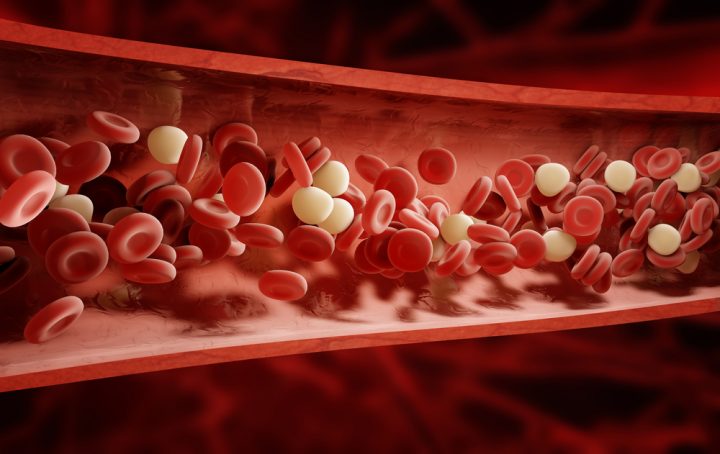sE-selectin, sIL-2R Levels Are Potential Markers of Localized Scleroderma Activity
Written by |

microcirculation benefits
Serum levels of E-selectin (sE-selectin) and soluble interleukin-2 receptor (sIL-2R) are potential prognostic markers of progression and severity in localized scleroderma, according to a recent study.
The study, “The correlation between serum E-selectin levels and soluble interleukin-2 receptors with relation to disease activity in localized scleroderma” was published in the journal Advances in Dermatology and Allergology.
Localized scleroderma is characterized by inflammation and thickening of the skin, caused by excessive deposits of collagen. A common complication in early stages of the disease is damage to the small blood vessels associated with the skin, causing increased inflammation in the blood vessel walls.
This, in turn, is associated with the release of soluble inflammatory molecules into the blood. Two of these molecules are sE-selectin — a molecule expressed on the inner walls of blood vessels — and sIL-2R, a surface protein found on activated immune cells.
To evaluate sE-selectin and sIL-2R as possible predictors of localized scleroderma, researchers analyzed their serum concentrations and assessed their correlation with disease severity.
The study enrolled 42 people with localized scleroderma (mean age 49 years), and 41 healthy controls (mean age 46.3 years). Localized scleroderma patients were further categorized based on disease subtypes, including generalized (19 patients), plaque (14 patients), and linear (9 patients) subtypes.
Researchers found significantly higher serum concentrations of sE-selectin in patients with localized scleroderma (median 34.75 ng/ml), compared with the control group (median 21.40 ng/ml). Similarly, patients with localized scleroderma showed a significant increase in sIL-2R serum levels (median 8.99 ng/ml) compared with control subjects (median 6.22 ng/ml).
When researchers compared the three subtypes of localized scleroderma, they found that patients with generalized scleroderma had the highest concentrations of sE-selectin (median 54.85 ng/ml). This was followed by concentration levels measured in the plaque subtype (median 31.30 ng/ml) and linear subtype (median 29.20 ng/ml). sE-selectin levels from all scleroderma individual subtypes were significantly higher than the levels observed in the control group.
Analysis of sIL-2R levels between localized scleroderma subgroups and control subjects showed significant differences between generalized (median 9.94 ng/ml) or plaque subtypes (median 8.23 ng/ml), and the control group (median 6.22 ng/ml). Among the subtypes, the linear subtype (median 7.52 ng/ml) showed the lowest concentration, which was not significantly higher than control values.
To analyze possible associations between measured parameters in the serum and disease severity, researchers first assessed severity by using the Localized Skin Severity Index (LoSSI). LoSSI scores size changes of existing lesions, development of new lesions, skin redness (erythema), and skin thickness in 18 parts of the body.
Results showed that both sE-selectin and sIL-2R levels had a significant correlation with disease severity, meaning that serum levels rose along with increasing disease severity. sE-selectin presented a moderate correlation, while sIL-2R presented a weak correlation with disease severity.
Although not significant, researchers found an association between sE-selectin and duration of disease. In contrast, sIL-2R levels did not correlate with disease duration.
“sE-selectin levels in serum and from the biopsies of skin lesions are an adequate marker of endothelial function which has been confirmed in many studies concerning systemic and localized scleroderma,” the researchers said.
The team also noted that, although sIL-2R serum levels did not correlate with disease duration, they did correlate with disease severity, making it a potential prognostic marker.
“The proven correlation of sIL-2R concentrations with the severity of the disease seems to make it a valuable prognostic factor for predicting further course of the disease,” the team said.
Overall, the researchers suggested that both sE-selectin and sIL-2R are potential prognostic markers for localized scleroderma.





